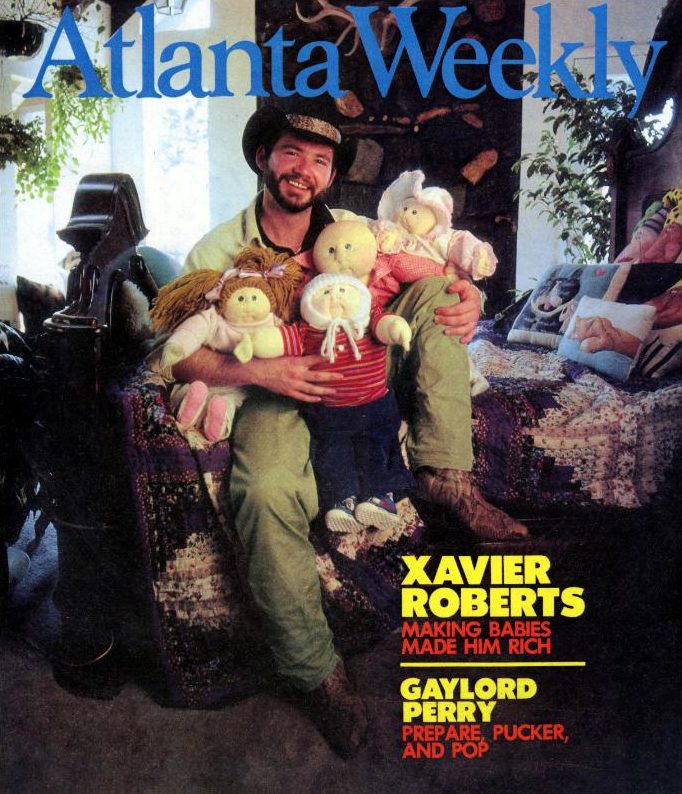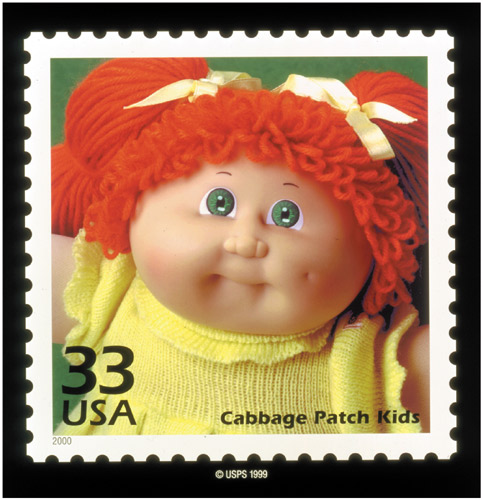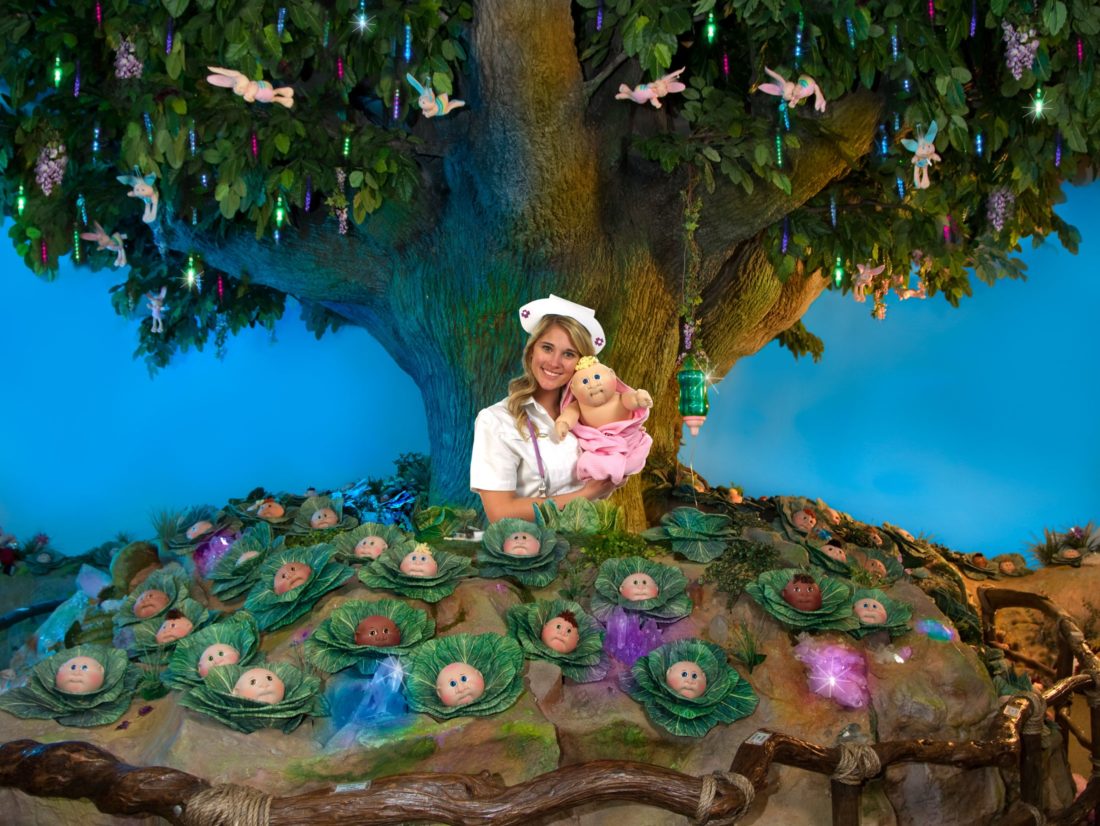Where do babies come from? If you answered, “a magical animatronic tree in Cleveland, Georgia,” you’ve likely been to BabyLand General Hospital, the toyshop, museum, and maternity ward for Cabbage Patch Kids, the dolls that swept American playgrounds in the 1980s. This weekend, the company will celebrate forty years by throwing a birthday party at its north Georgia headquarters—complete with the giveaway of a special fortieth-anniversary doll, handmade by the company’s creator himself, Xavier Roberts.

Photo: Courtesy of BabyLand General Hospital
Teagan Abbey, the doll Roberts will be giving away for the Cabbage Patch Kids’ fortieth anniversary.
The Cabbage Patch Kids story begins in 1978 when Roberts, then a twenty-three-year-old artist, won a blue ribbon for sculpture for his first “Little People” dolls—plush and soft, with yarn-knit hair and hand-painted faces—at an art show in Osceola County, Florida. Spurred on by that success, Roberts opened a facility in his hometown of Cleveland, where he hired five artisans who used a German technique called needle molding to begin making the fabric dolls, which he traveled the country to sell at arts and crafts shows. In a savvy marketing twist, Roberts’ dolls were “adopted” rather than purchased, and came with specially-picked names and birth certificates. “These dolls put individuality into the mass market,” says Margaret McLean, director of corporate communications for BabyLand.
Though its products were cute, the company’s early years were ugly, fraught with legal battles over the dolls’ origins. Martha Nelson Thomas, a Kentucky artist, had been creating “Doll Babies,” which bore striking resemblance to “Little People,” and putting them up for “adoption” at shows in the early seventies. In 1983, the New York Times reported that Thomas “filed suit against Mr. Roberts on January 29, 1980 … [and that] Mr. Roberts sought her out in 1976 at a crafts fair in Berea, Kentucky, and told her he wanted to sell her dolls at a gift shop he managed.” When they couldn’t agree on a price, Thomas withdrew her permission, but Roberts made his own version of the doll. Since Thomas had no copyright, they settled the case, and Roberts was allowed to continue to make and sell his dolls. Their popularity skyrocketed.

Photo: Courtesy of BabyLand General Hospital
Roberts on the cover of Atlanta Weekly in 1981.
In 1982, Roberts’ “Little People” officially underwent a name and brand change, becoming Cabbage Patch Kids, with mass-produced vinyl faces made in Hong Kong replacing the fabric ones. Just a year later, the company sold millions of the dolls for around $25 apiece, although scalpers would charge much higher sums. “[Roberts] had no idea when they were first introduced that they would become so popular,” McLean says. “It went on record as the largest toy introduction in history.” Stores ran out of their original shipments by October, spawning massive overnight lines and even a few fights. In 1985, a doll named Christopher Xavier flew in a U.S. space shuttle (he’s now retired to a cushy life in the Smithsonian). By the end of the decade, the company had sold 65 million dolls. The Kids appeared on stamps, inspired movies and a cereal, and in 1992 and 1996, acted as official mascots for the U.S. Olympic teams in Barcelona and Atlanta.

Photo: Courtesy of BabyLand General Hospital
A Cabbage Patch Kids stamp.
Today, BabyLand General Hospital is both corporate headquarters and roadside attraction. Originally located in a small renovated medical facility in the middle of downtown Cleveland, it moved in 2010 to its current location, a seventy-five thousand square foot hilltop estate that sits on 650 acres of north Georgia mountains. In 2014 the company returned to its roots: Cabbage Patch Kids are still mass-produced, but soft-faced “Little People” returned, hand-stitched in Cleveland using the original needle molding technique. As for Roberts, he remains involved with the company, according to McLean, but spends much of his time caring for BabyLand’s grounds, which he maintains as a living tribute to his mother.

Photo: Courtesy of BabyLand General Hospital
BabyLand General Hospital in Cleveland, Georgia.
Inside BabyLand, employees dress in scrubs and newborn dolls sleep in incubators and cribs. In addition to shopping for dolls and accessories, guests can even witness a “live birth.” During this production, a “doctor” assists Mother Cabbage, the life-size tree at the center of it all, with her delivery as joyful onlookers cheer. An on-call “OB/GYN” may mention how easy these births are—they’ve never had to do a “branch” delivery (the term they use for breech, when a baby comes out feet first) or C-section (“C” standing for cabbage, naturally).

Photo: Courtesy of BabyLand General Hospital
Mother Cabbage, the tree where all Cabbage Patch Kids are born.
“When people adopt a doll, it’s like a child, and it’s like a piece of art at the same time,” McLean says. “You adopt what you love.” And for the 250,000 people who visit BabyLand each year, it’s safe to say that love for Cabbage Patch Kids goes on and on.








